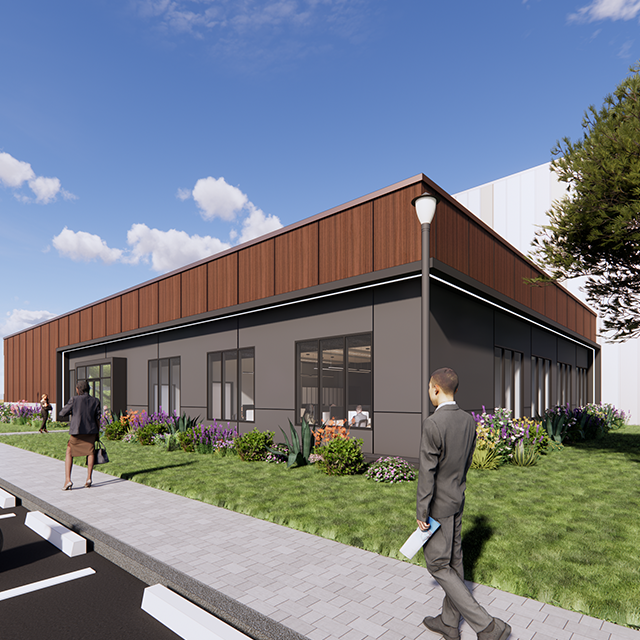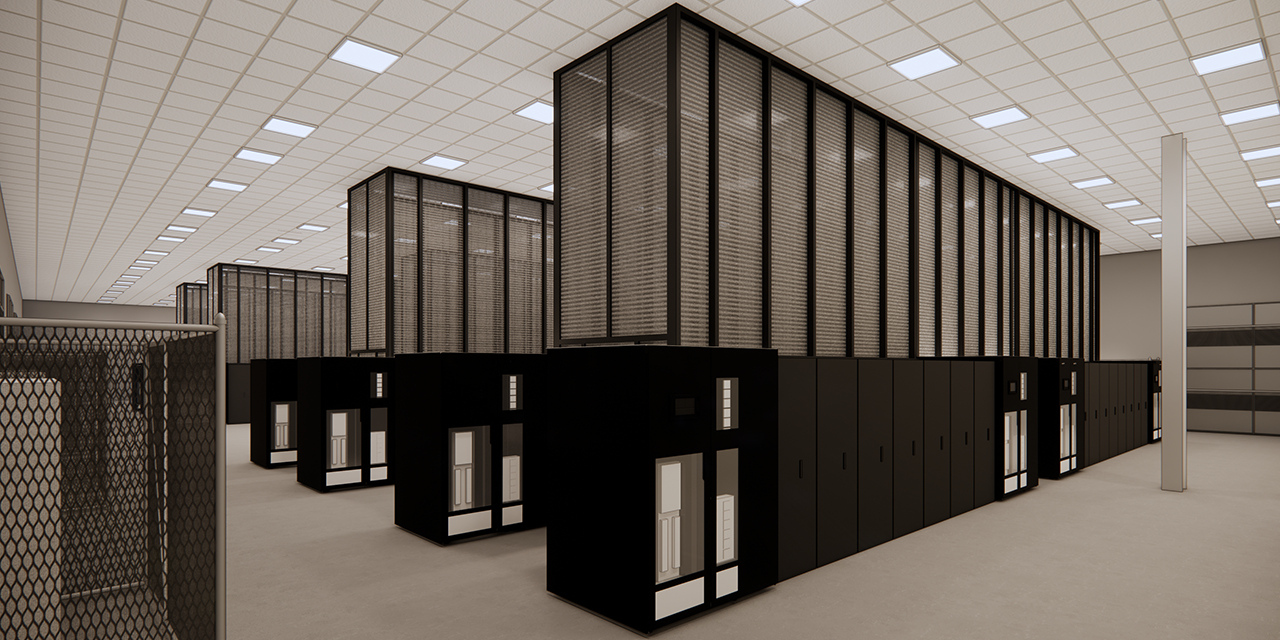Biomass-Powered Greenfield Data Center
Energy Client

Projects > Biomass-Powered Greenfield Data Center
Energy Client
Collaborating with an energy partner, SSOE is playing a pivotal role in the development of a groundbreaking greenfield colocation data center, uniquely supported by a biomass power plant. This innovative facility, the first of its kind in the U.S., is designed to set new standards for capital and operational cost efficiency, scalability, energy performance, and sustainability. This project marks a strategic milestone for SSOE, expanding our capabilities in data center design and sustainability.
The data center will launch with an initial capacity of 2.5 MW, scalable up to 20 MW across three site locations. It supports cabinet densities ranging from 10–50 kW, with infrastructure compatibility for future AI rack deployments to exceed 100kW / rack. The facility prioritizes reliability and is engineered to meet Uptime Institute Tier III standards for concurrent maintainability and uptime.
SSOE delivered flexible design solutions that adapt to our client’s evolving needs and feedback from stakeholders. Our team provided a conceptual design framework that can be replicated across multiple U.S. locations. SSOE tailored flexible architectural and engineering solutions to specific site requirements while maintaining consistency in performance, cost, efficiency, and reliability. The project’s connection to a biomass power plant—using biowaste to generate electricity and fertilizer—underscores its commitment to sustainability. The data center will use reclaimed water from steam generation, further reducing its environmental impact.
Special design considerations include:
Our architectural team led the vision for the “Nature to Network” concept integrating materiality, sustainability, and future growth into a cohesive design. The façade and interior spaces were designed to create a warm, nature-inspired environment, which is also neighborhood-friendly.
Leveraging Autodesk Construction Cloud, our team captured client requirements through real-time collaboration. We developed a replicable equipment arrangement strategy supporting core data center functions while providing AI-ready infrastructure. This planning system enables seamless expansion for future upgrades, delivering long-term adaptability and reinforcing the design’s flexibility.
SSOE provided performance studies using Forma to explore solar, wind, and acoustic impacts. The team assessed façade materials for embodied carbon reductions. We conducted a capacity study to evaluate the potential generation capacity for on-site solar farm utilizing photovolatic (PV) arrays.
Using locally generated renewable energy, the data center will support energy independence and sustainability, with a 20 MW facility potentially consuming as much power annually as 16,000 homes.
Construction is expected to begin in early 2026 with the data center fully operational in 2027.


Have a question regarding our services? Need assistance with an upcoming project? Send us an email. We look forward to hearing from you and will follow up soon.
© SSOE GROUP 1948-2025
Legal | Privacy Policy | CA Privacy Policy | Cookie Policy
Website designed and developed by
Raincastle Communications, Inc.

Autodesk Construction Cloud (ACC) is SSOE’s enterprise-wide project delivery platform. We partner with the Autodesk Product team and have research access. Use of the AI Assistant allows our design teams, owners, and general contractors the ability to query the project specifications for quality, answers, and more rapid responses to RFIs, submittals, or issues.
SSOE has developed a proof-of-concept to use an AI Agent to act as a Master Engineer and Architect trained in SSOE’s processes, best-known-methods, and trainings. Our data structure is being remodeled to enable better use of our proprietary knowledge to train the agent on the ‘SSOE way’.
SSOE is actively piloting AI Chat large language models (LLMs) or copilots that use Natural Language Processing (NLP) to streamline both design and development tasks, transforming how our teams interact with software and each other.
By integrating chat LLM engines into platforms like Revit, we’re enabling users to prompt complex actions using simple, conversational commands. In Revit, this means automating tasks such as modeling elements, cleaning up parameter data, managing annotations and dimensions, and organizing sheets—without writing scripts. These automations and quality prompts can be shared across project teams, accelerating workflows and reducing manual effort.
Similarly, our internal Software Development Community is leveraging GitHub Copilot to expedite coding tasks. Developers can generate and refine code using NLP prompts, tapping into GitHub’s extensive Repo to move faster from concept to implementation.
Together, these tools represent a shift from traditional, expert-driven scripting to intuitive, AI-assisted automation, unlocking new levels of efficiency and scalability across our projects.
We helped our client visualize and optimize façade design for occupant comfort—long before breaking ground through the use of the Autodesk Forma tool. It allows the designer to rapidly experiment with the building’s geometry and façade design to promote sustainability, prioritizing quality of spaces and comfort for end uses, especially in extreme climates (daylighting and microclimate analysis tools) at the project’s exact geographic location, using location-specific environmental data.
Discover how SSOE is using Autodesk Forma to improve sustainability outcomes for industrial projects: SSOE Group: Improving sustainability outcomes for industrial projects with Autodesk Forma.
SSOE is utilizing Microsoft Copilot Edge and M365 to significantly enhance work efficiency and accuracy across various departments. Copilot is accessible to all staff after training. Key areas of application include using it as a writing assistant, for idea generation, document summarization and generation, research assistant, excel assistant, programming code assistant, language translations, product comparison and data analysis. Use of Copilot has become part of the everyday life of SSOE employees who have identified key ways it can help them become more efficient with their daily tasks as well as more accurate in their deliverables.
Today, 100% of SSOE employees have taken the voluntary training and have access to Copilot Edge, achieving early our October 1, 2025 goal.
We found ourselves in need of a more robust tool to enhance resource forecasting and staff assignment capabilities. Instead of waiting for the perfect tool, we’re building it. SSOE’s in-house technology team has developed and piloted a tool that aims to forecast optimal staff mix and duration for new projects against existing workload to better understand capacity and manage resources efficiently. Additionally, the tool will allow teams to identify gaps to optimal staff mix.